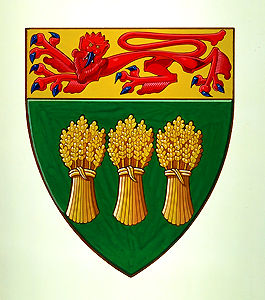Gardiner, James Garfield
James Garfield Gardiner, "Jimmy," teacher, farmer, politician, premier of Saskatchewan (b in Hibbert Township, Ont 30 Nov 1883; d at Lemberg, Sask 2 Jan 1962). Of Scottish descent, Gardiner left Ontario for the North-West Territories and in 1905 witnessed the creation of Saskatchewan, where he remained to champion Prairie interests. An autobiographical novel, The Politician: or, The Treason of Democracy, written while Gardiner taught at the Manitoba Teacher's College in 1910, was published posthumously in 1975.
As MLA (1914-35), Cabinet minister (1922-26), premier (1926-29, 1934-35), and leader of the Opposition (1929-34), he tirelessly pursued Liberal policies. He served as federal minister of agriculture in 1935-57 (a record length of time for any Canadian to hold one portfolio) and was so single-minded in espousing western affairs that he frequently exasperated his colleagues. His Prairie Farm Rehabilitation Administration was designed to assist drought-stricken prairie farmers. He was also minister of national war services in 1940-41. He sought his party's national leadership unsuccessfully in 1948.
Gardiner's role as a western tribune was influenced by early poverty and a doctrinaire training in liberalism at Manitoba College. His faith in individual effort and in limited government as the servant of individuals never wavered, and he consistently applied his ideas to building his province and helping its citizens in turn through depression, war and reconstruction. Notably partisan, he held that a minister should be fully responsible and he believed frankly in patronage.
Gardiner Dam, built by the federal Conservative and provincial CCF governments after Gardiner's defeat in the 1958 general election, was named in his honour when it was opened in 1967. As a federal Cabinet minister, Gardiner had long, but unsuccessfully, fought for the construction of such a dam on the South Saskatchewan River for irrigation and recreation and for the production of hydro-electricity.

 Share on Facebook
Share on Facebook Share on X
Share on X Share by Email
Share by Email Share on Google Classroom
Share on Google Classroom


